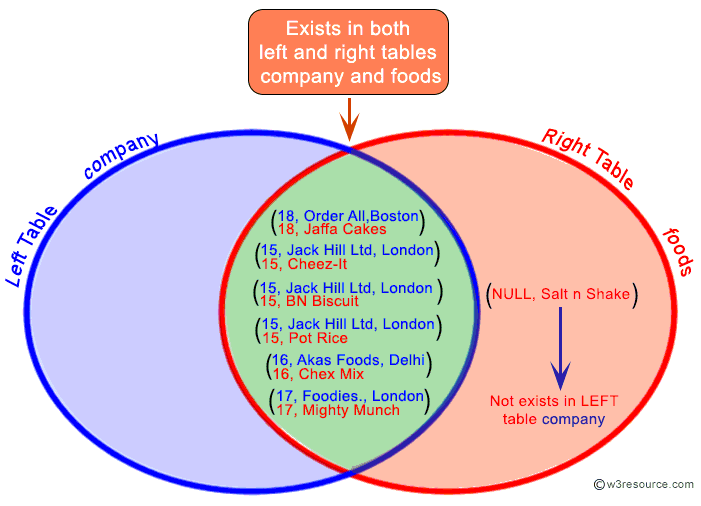The result is NULL from the left side, when there is no match. Join (SQL) A JOIN is a means for combining columns from one ( self-join ) or more tables by using values common to each. ANSI -standard SQL specifies five types of JOIN : INNER, LEFT OUTER, RIGHT OUTER, FULL OUTER and CROSS. As a special case, a table (base table, view, or joined table) can JOIN to itself in a self-join.
Different types of Joins are: INNER JOIN. The SQL RIGHT OUTER JOIN is a type of outer join to which prefer all the rows of a right table or second table to combine the two tables. It adds all the rows from the second table to the resulted table. Learn how to use left and right joins using the plus sign in an Oracle database.
Do you find this FAQ incorrect or incomplete? RIGHT (OUTER) JOIN : Return all records from the right table, and the matched records from the left table. RIGHT JOIN and RIGHT OUTER JOIN are the same. Right Outer Join in SQL Statement. To do this, you specify either a LEFT OUTER JOIN or a RIGHT OUTER JOIN.

All rows from the ttable ( right table) will appear at least once in the result set. Based on the join _predicate, if no matching row from the ttable (left table) exists, NULL will appear in columns from the ttable for the rows that have. Here is how the RIGHT OUTER JOIN works.
Each row from the Ttable is compared with rows from the T2table: If a pair of rows satisfies the join predicate, the column values of both rows are combined to make a result row that is then included in the result set. Initially, it applies inner join on Table_A and Table_B to retrieve matching tuples from both the tables. Then it extends those tuples of Table_A with NULL that do not have a matching tuple in Table_B. FULL JOIN gets all records from both tables and puts NULL in the columns where related records do not exist in the opposite table. Data present in employ table is: Data.

And a right table is on the right side of the join clause. When we speak of a left outer join, what we’re saying is, take all the rows from the left table, and join them to rows on the right table. And conversely, when we start learning about right outer joins, what we’ll be saying is take all the rows from the right table, and match them where you can to rows from the left table. It preserves the unmatched rows from the second ( right ) table, joining them with a NULL in the shape of the first (left) table.
A RIGHT OUTER JOIN is one of the JOIN operations that allow you to specify a JOIN clause. A LEFT OUTER JOIN B is equivalent to B RIGHT OUTER JOIN A, with the columns in a different order. It will also return any matching records from the left table. Full outer join:To keep all rows from both data frames, specify how= ‘outer’. Left outer join:To include all the rows of your data frame x and only those from y that match, specify how= ‘left’.
Join in R: How to join (merge) data frames (inner, outer, left, right ) in R. The names of the columns that are common to both x and y. The default is to use the columns with common names between the two data frames. Logical values that specify the type of merge. Let us now go to the Create tab and create a query from the Design View. Select tblProjects and tblTasks and close the Show Table dialog box as in the following screenshot.
Add the ProjectName field from tblProjects, and TaskTitle, StartDate and DueDate from tblTasks table. Along with RightNow Media Originals, enjoy videos on topics that relate to everyone in your church. Join over 10churches and organizations using RightNow Media.
Nincsenek megjegyzések:
Megjegyzés küldése
Megjegyzés: Megjegyzéseket csak a blog tagjai írhatnak a blogba.